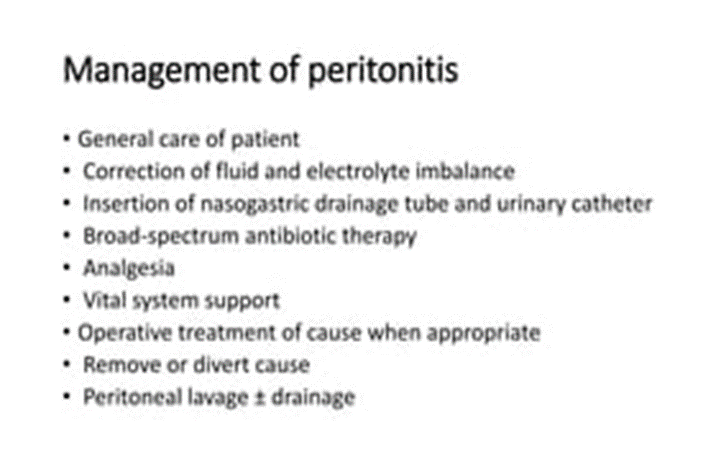An adult client who had a gastric bypass surgery 2 weeks ago, is admitted with possible anastomosis leakage. The client's abdomen is tender to touch, and the vital signs are: temperature 101° F (38.3° C), heart rate 130 beats/minute, respiratory rate 26 breaths/minute, and blood pressure 100/50 mmHg Which intervention is most important for the nurse to include in the client's plan of care?
Encourage regular turning.
Monitor skin for breakdown
Assess wound drainage daily.
Strict IV fluid replacement.
The Correct Answer is D
A. Encourage regular turning:
While turning is important for preventing complications like pressure ulcers, in this acute situation, addressing fluid imbalance and potential sepsis take precedence.
B. Monitor skin for breakdown:
Monitoring for skin breakdown is essential but is not the most critical intervention at this moment.
C. Assess wound drainage daily:
Daily assessment of wound drainage is important for evaluating the status of the surgical site. However, in this situation of potential anastomosis leakage with signs of systemic infection and hypotension, immediate interventions to stabilize the client's condition are of higher priority.
D. Strict IV fluid replacement:
This is the correct answer. The client is displaying signs of systemic infection (fever) and possible sepsis (tachycardia, hypotension), which might be due to an anastomosis leakage following gastric bypass surgery. Ensuring adequate IV fluid replacement is crucial to address hypotension, maintain perfusion, and support hemodynamic stability in this critical situation.

Nursing Test Bank
Naxlex Comprehensive Predictor Exams
Related Questions
Correct Answer is C
Explanation
A. Hyperactive bowel sounds.
Hyperactive bowel sounds are more suggestive of gastrointestinal issues, such as intestinal hypermotility or increased peristalsis. While diabetes can affect the gastrointestinal system, hyperactive bowel sounds are not a specific indicator of the symptoms described by the client.
B. Anxiety and sighing.
Anxiety and sighing are more indicative of emotional or psychological factors rather than dehydration. While stress can impact blood sugar levels in individuals with diabetes, anxiety and sighing are not direct signs of the dehydration that may be associated with the reported symptoms.
C. Dark yellow urine.
Dark yellow urine can be a sign of concentrated urine, suggesting dehydration. In diabetes, especially when blood sugar levels are elevated, increased urine production (polyuria) can lead to dehydration. Dark yellow urine may indicate that the urine is more concentrated due to a lack of fluid intake.
D. Myalgia in wrists and hands.
Myalgia in the wrists and hands is not a typical symptom of dehydration related to diabetes. It could be associated with various conditions, such as musculoskeletal issues or nerve-related problems. This symptom is less likely to be directly linked to the reported weakness and palpitations.
Correct Answer is C
Explanation
A. Facial puffiness and periorbital edema:
These are common signs of hypothyroidism but may not require immediate action unless accompanied by severe symptoms.
B. Cold and dry skin:
Cold and dry skin is a characteristic feature of hypothyroidism, but a further decline in the level of consciousness is a more urgent issue.
C. Further decline in the level of consciousness.
A decline in the level of consciousness is a critical sign that requires immediate attention, as it may indicate worsening hypothyroidism, myxedema coma, or other serious complications. Myxedema coma is a life-threatening condition associated with severe hypothyroidism, and it requires prompt medical intervention.
D. Hematocrit of 30% (0.30):
While anemia is a potential complication of hypothyroidism, a hematocrit of 30% alone may not be the most immediate concern compared to a decline in the level of consciousness.
Whether you are a student looking to ace your exams or a practicing nurse seeking to enhance your expertise , our nursing education contents will empower you with the confidence and competence to make a difference in the lives of patients and become a respected leader in the healthcare field.
Visit Naxlex, invest in your future and unlock endless possibilities with our unparalleled nursing education contents today
Report Wrong Answer on the Current Question
Do you disagree with the answer? If yes, what is your expected answer? Explain.
Kindly be descriptive with the issue you are facing.
